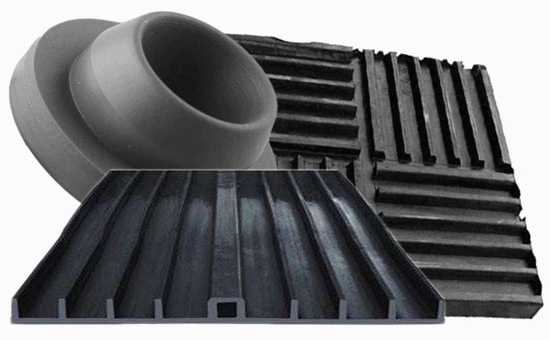
Butyl rubber has excellent air tightness, water tightness, heat resistance, shock absorption and chemical stability, and can be used in the production and preparation of various tires, sealing gaskets, anti-corrosion linings, heat-resistant conveyor belts, and waterproof materials. Good effect and long product life. In low-hardness butyl rubber products, rubber product manufacturers often use white carbon black modified by coupling agents instead of directly using white carbon black. Why? What should I pay attention to when using silica/coupling agent for low hardness butyl compounds?
1. Reasons for the use of coupling agent modified white carbon black for reinforcement of low hardness butyl compounds
As we all know, the role between butyl rubber and reinforcing agent is weak. Blindly increasing the amount of reinforcing agent will not only cause waste of raw materials, but the reinforcing agent cannot be evenly dispersed in the rubber compound. It will also bring about the processing of butyl rubber products. It is troublesome, so when reinforcing agent is used in butyl rubber products, the reinforcing agent is usually heat-treated in advance or modified with additives in an appropriate amount.
White carbon black is the product with the best reinforcement effect among light-colored rubber fillers, but the use of white carbon black alone cannot achieve the desired reinforcement effect, so rubber product manufacturers often use silane coupling agent 2LLYY629 to modify white carbon black . When butyl rubber is used to prepare low-hardness butyl compound, the coupling agent in the white carbon black can significantly improve the reinforcing effect of the white carbon black in the butyl rubber, and improve the tensile strength, elasticity and wear resistance of the butyl rubber And other indicators.
In actual production, the mixing of butyl rubber compound using silica/coupling agent has higher safety and faster vulcanization speed.
2. Skills of adding white carbon black/coupling agent in low-hardness butyl rubber
(1) Frequently asked questions: When using carbon black/silane coupling agent to prepare low-hardness butyl rubber products, if carbon black reinforcement is also used in the formulation, due to the role of different varieties of reinforcement in butyl rubber The effect is different, so rubber product manufacturers need to grasp the timing of the addition of the three raw materials. Adding carbon black and then adding white carbon black/coupling agent or white carbon black/coupling agent too fast, etc. will cause carbon black and white carbon black in The reinforcement effect in butyl compounds is greatly reduced.
(2) Solution: During the mixing process of low-hardness butyl rubber with carbon black/silica/coupling agent, the workshop operator should adjust the roller pitch and roller temperature according to actual needs. After wrapping the roller and kneading moderately, slowly add a small amount of white carbon black/coupling agent, and increase the amount of each time appropriately. After each addition, knead for a period of time until it is completely added. Refining, and then add a small amount of carbon black several times to ensure that the butyl rubber has good flexibility and fluidity, and effectively avoid the problems of bubbles on the surface of the low-hardness butyl rubber products and the edge of the parting line.
When butyl rubber is used to reinforce low-hardness rubber products using white carbon black, rubber product manufacturers usually use silane coupling agents to modify white carbon black. Common varieties are coupling agents Si-69, modified butyl rubber products The aging resistance will increase with the increase of the amount of silica. It should be noted that when the general silane coupling agent Si-69 reacts with white carbon black, usually only about 50% of the added amount participates in the reaction, and it needs to be parked for about 24 hours during use.
Exclusive original article [commercial authorization] reprint, excerpt and excerpt in any form are prohibited without written authorization. Focus on Hongyun rubber: learn the process formula and raw material technology of producing rubber products from recycled rubber to help you reduce costs and increase profits